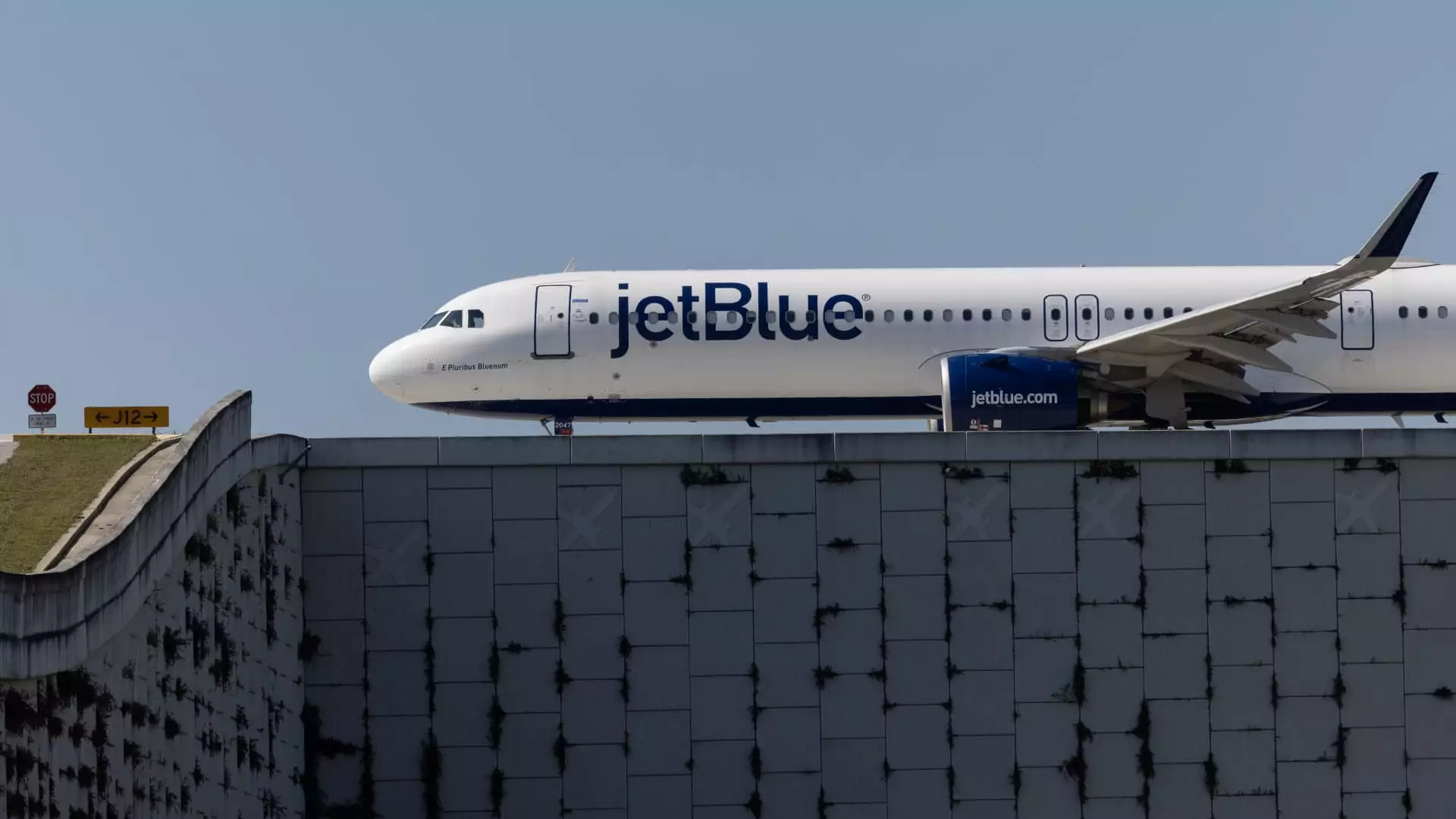The aviation industry is often a reflection of broader economic conditions, and airline stocks can fluctuate wildly in response to various external and internal factors. Recently, JetBlue Airways found itself in a precarious situation, as its shares plummeted over 25% in a single day, marking the steepest decline since the airline went public. This article will examine the causes behind this drop, the ongoing challenges JetBlue faces, and the strategies being implemented to reignite growth.
At the heart of JetBlue’s share price plunge are disappointing forecasts regarding unit costs and revenue projections. The airline disclosed that it anticipates its unit costs, excluding fuel, will rise significantly—up to 7% in 2024, with an alarming 10% increase expected this quarter compared to last year. Such increases pose profound implications for an airline that is already battling tight margins in an industry where cost control is paramount for survival.
Moreover, JetBlue’s revenue projections have been lackluster at best, projecting variances in the range of a slight decline of 0.5% to a potential rise of 3.5%. In stark contrast, larger competitors such as Delta and United have been optimistic, forecasting stronger growth, suggesting they possess better pricing power and operational efficiencies. This disparity in performance could signal to investors a weakening market position for JetBlue as it struggles to keep pace with its peers.
In a bid to stabilize its financial standing, JetBlue is executing an aggressive cost-reduction plan. This multifaceted approach includes eliminating unprofitable routes, postponing the acquisition of new aircraft, and charging higher fares for premium seat selections. Such measures could potentially enhance short-term margins but also risk alienating a customer base sensitive to rising ticket prices amidst an ever-increasing cost of living.
Additionally, reports have emerged regarding JetBlue’s voluntary early retirement packages for senior pilots. While intended to reduce labor costs, this maneuver raises questions about the airline’s operational stability and workforce morale. By cutting down experienced personnel, the airline may struggle with operational inefficiencies that could compound existing challenges.
CEO Joanna Geraghty has emphasized the importance of a long-term strategy to restore profitability, stating that while progress is being made, the journey is not linear. The aim is to add as much as $900 million to pretax profit by 2027. This goal is certainly ambitious, especially in light of JetBlue’s immediate fiscal hurdles. The focus on long-term gains may not sit well with investors who are accustomed to quarterly returns and are becoming increasingly impatient as the airline struggles to just break even.
JetBlue’s fourth-quarter performance, marked by a narrowed loss of $44 million, while better than the previous year’s loss of $104 million, still leaves considerable room for improvement. Generating $2.28 billion in revenue represents a 2.1% decline year-over-year, further fuelling investor concerns over the airline’s fundamental health.
Adding to JetBlue’s woes are legal entanglements that have hindered its growth trajectories. Two significant antitrust cases resulted in setbacks; one blocked a proposed acquisition of Spirit Airlines, while another limited partnerships with American Airlines. Such roadblocks not only stifle growth but also strain the airline’s already fragile financial position.
Melius Research analyst Conor Cunningham aptly noted that, despite the current management team meeting their performance benchmarks, JetBlue has lagged behind in a recovering travel market where airlines are reporting solid earnings growth. To regain ground, JetBlue must execute robust revenue-generating strategies swiftly.
JetBlue’s recent challenges illustrate the fine line airlines walk in balancing growth, cost control, and customer satisfaction. The stark decline in share price serves as a wake-up call, signaling that without immediate and effective corrective actions, JetBlue could continue to falter in an increasingly competitive landscape. For the airline to successfully navigate these turbulent skies, it must adapt quickly to shifting market conditions while reenergizing its operational and financial strategies. The journey won’t be easy, but continued vigilance and adaptability could allow JetBlue to soar once more, albeit cautiously.

